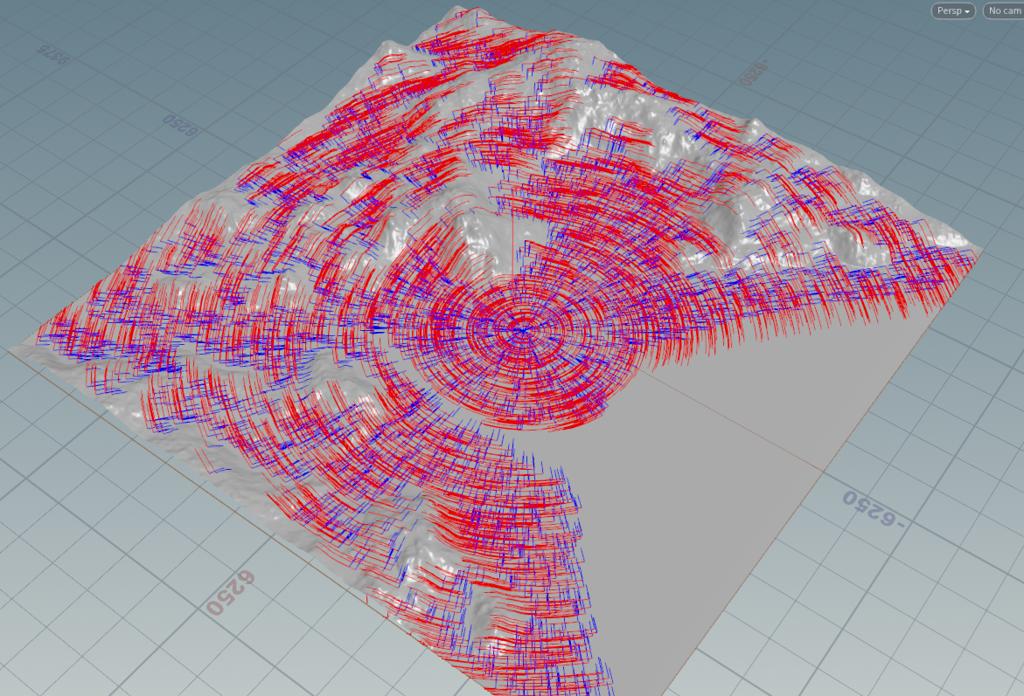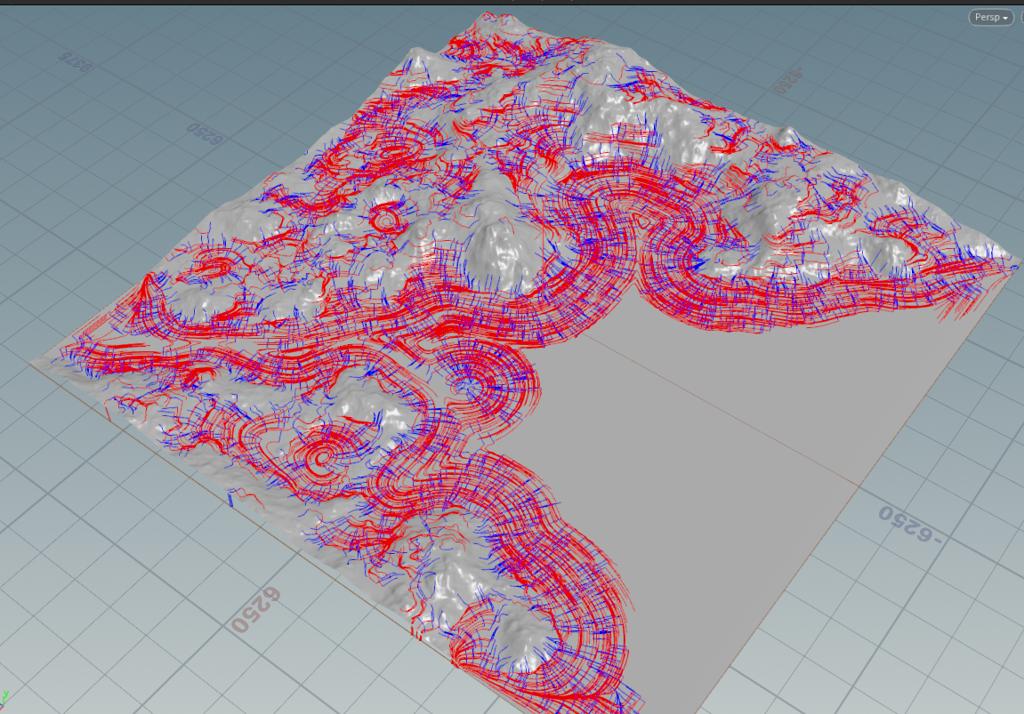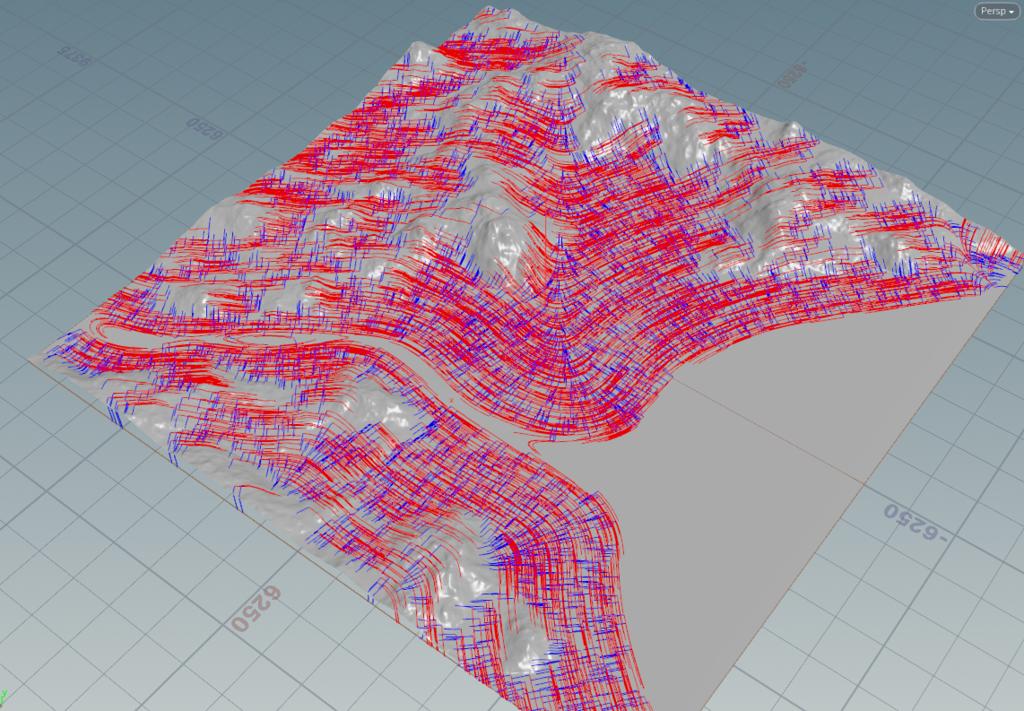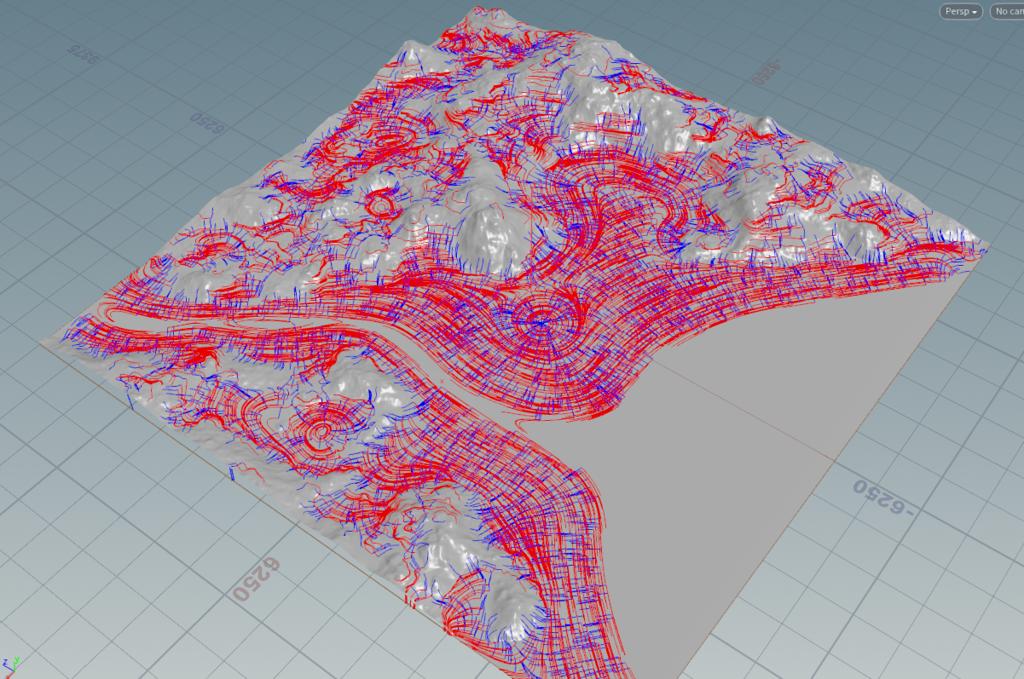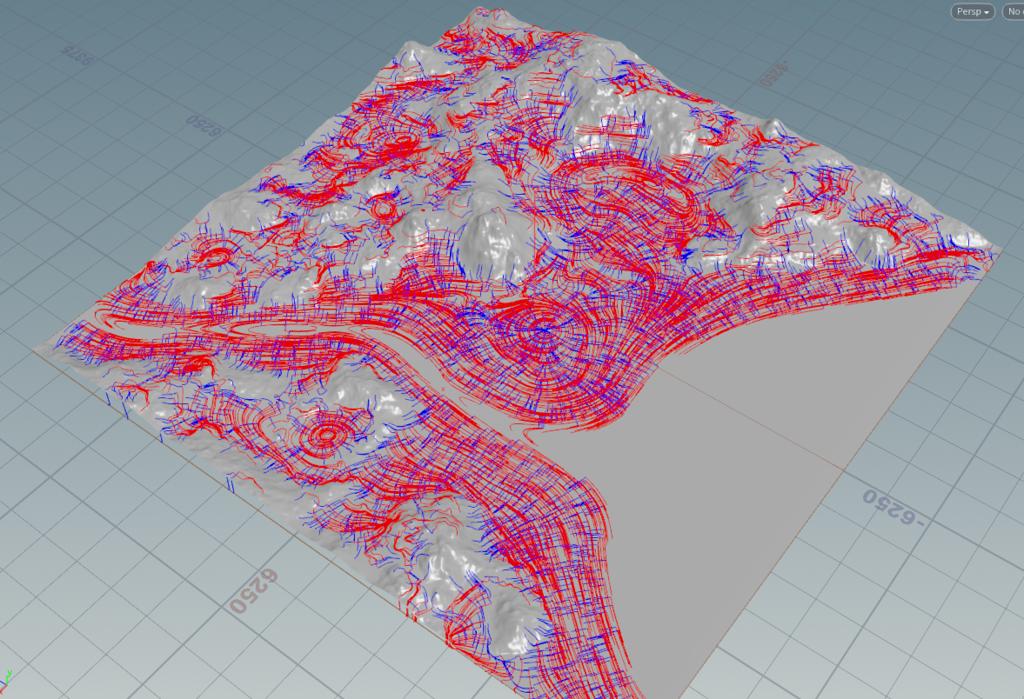1
2
3
4
5
6
7
8
9
10
11
12
13
14
15
16
17
18
19
20
21
22
23
24
25
26
27
28
29
30
31
32
33
34
35
36
37
38
39
40
41
42
43
44
45
46
47
48
49
50
51
52
53
54
55
56
57
58
59
60
61
62
63
64
65
66
67
68
69
70
71
72
73
74
75
76
77
78
79
80
81
82
83
84
85
86
87
88
89
90
91
92
93
94
95
96
97
98
99
100
101
102
103
104
105
106
107
108
109
110
111
112
113
114
115
116
117
118
119
120
121
122
123
124
125
126
127
128
129
130
131
132
133
134
135
136
137
138
139
140
141
142
143
144
| function int getNearPointId(vector sideDir; vector lineDir; int ptnum; int otherpt){
int neibs[] = neighbours(0, ptnum);
if(len(neibs) == 1){
return neibs[0];
}
else{
vector thispos = point(0, "P", ptnum);
float minAngle = 6.28;
int minId = neibs[0];
foreach(int id; neibs){
if(id == otherpt){
continue;
}
vector otherPos = point(0, "P", id);
vector toDir = normalize(otherPos - thispos);
float dotLine = dot(toDir, -lineDir);
float dotDir = dot(toDir, sideDir);
float acos = acos(dotLine);
if(dotDir < 0){
acos = 6.28 - acos;
}
if(acos < minAngle){
minAngle = acos;
minId = id;
}
}
return minId;
}
}
//left: isleft = 1; right : isleft = 0;
function vector getGuideDir(int ptstart; int ptend; int isLeft){
vector pos1 = point(0, "P", ptstart);
vector pos2 = point(0, "P", ptend);
vector toVec = normalize(pos2 - pos1);
vector up = {0,1,0};
if(isLeft > 0.5){
return cross(up, toVec);
}else{
return cross(toVec, up);
}
}
function vector2 solveIntersection(vector start1; vector start2; vector dir1; vector dir2){
vector2 dir1xz, dir2xz;
dir1xz.x = dir1.x;
dir1xz.y = dir1.z;
dir2xz.x = dir2.x;
dir2xz.y = dir2.z;
if(abs(dot(normalize(dir1xz), normalize(dir2xz))) > 0.9999){
vector2 rtresult;
rtresult.x = (start1.x + start2.x) / 2;
rtresult.y = (start1.z + start2.z) / 2;
return rtresult;
}
vector2 start1xz, start2xz;
start1xz.x = start1.x;
start1xz.y = start1.z;
start2xz.x = start2.x;
start2xz.y = start2.z;
float t2 = ( start1xz.x * dir1xz.y - start1xz.y * dir1xz.x + start2xz.y * dir1xz.x - start2xz.x * dir1xz.y) / ( dir2xz.x * dir1xz.y - dir2xz.y * dir1xz.x);
vector2 result = start2xz + t2 * dir2xz;
return result;
}
function vector getOffsetPosition(int pt1; int ptmid; int pt2; float offsetDist1; float offsetDist2; vector dirGuide){
vector pos1 = point(0, "P", pt1);
vector posmid = point(0, "P", ptmid);
vector pos2 = point(0, "P", pt2);
vector to1 = normalize(pos1 - posmid);
vector to2 = normalize(pos2 - posmid);
vector cross1 = cross(to1, dirGuide);
vector cross2 = cross(to2, dirGuide);
cross1.x = 0;
cross1.z = 0;
cross2.x = 0;
cross2.z = 0;
vector offsetVec1 = cross(cross1, to1);
vector offsetVec2 = cross(cross2, to2);
vector start1 = posmid + offsetDist1 * normalize(offsetVec1);
vector start2 = posmid + offsetDist2 * normalize(offsetVec2);
vector2 resultVecXZ = solveIntersection(start1, start2, to1, to2);
vector resultVec;
resultVec.x = resultVecXZ.x;
resultVec.z = resultVecXZ.y;
resultVec.y = (start1.y + start2.y) / 2;
return resultVec;
}
int pts[] = primpoints(0, @primnum);
//printf("lens %sn", len(pts));
float width = 0.02;
if(len(pts) == 2){
vector pos1 = point(0, "P", pts[0]);
vector pos2 = point(0, "P", pts[1]);
vector linedir = normalize(pos2 - pos1);
vector up = {0,1,0};
vector leftDir = getGuideDir(pts[0], pts[1], 1);
vector rightDir = getGuideDir(pts[0], pts[1], 0);
int ptidleftnear2 = getNearPointId(leftDir, linedir, pts[1], pts[0]);
int ptidleftnear1 = getNearPointId(leftDir, -linedir, pts[0], pts[1]);
vector ln2Dir = getGuideDir(pts[1], ptidleftnear2, 1);
vector ln1Dir = getGuideDir(ptidleftnear1, pts[0], 1);
int ptidrightnear2 = getNearPointId(rightDir, linedir, pts[1], pts[0]);
int ptidrightnear1 = getNearPointId(rightDir, -linedir, pts[0], pts[1]);
vector rn2Dir = getGuideDir(pts[1], ptidrightnear2, 0);
vector rn1Dir = getGuideDir(ptidrightnear1, pts[0], 0);
vector left1 = getOffsetPosition(ptidleftnear1, pts[0], pts[1], width, width, ln1Dir + leftDir);
vector left2 = getOffsetPosition(pts[0], pts[1], ptidleftnear2, width, width, ln2Dir + leftDir);
vector right1 = getOffsetPosition(ptidrightnear1, pts[0], pts[1], width, width, rn1Dir + rightDir);
vector right2 = getOffsetPosition(pts[0], pts[1], ptidrightnear2, width, width, rn2Dir + rightDir);
int addleft1 = addpoint(0, left1);
int addleft2 = addpoint(0, left2);
@ptidleftnear1 = ptidleftnear1;
@ptidleftnear2 = ptidleftnear2;
@pos1 = pts[0];
@pos2 = pts[1];
int addright1 = addpoint(0, right1);
int addright2 = addpoint(0, right2);
addprim(0, "poly", addleft1, addleft2, addright2, addright1);
}
|

